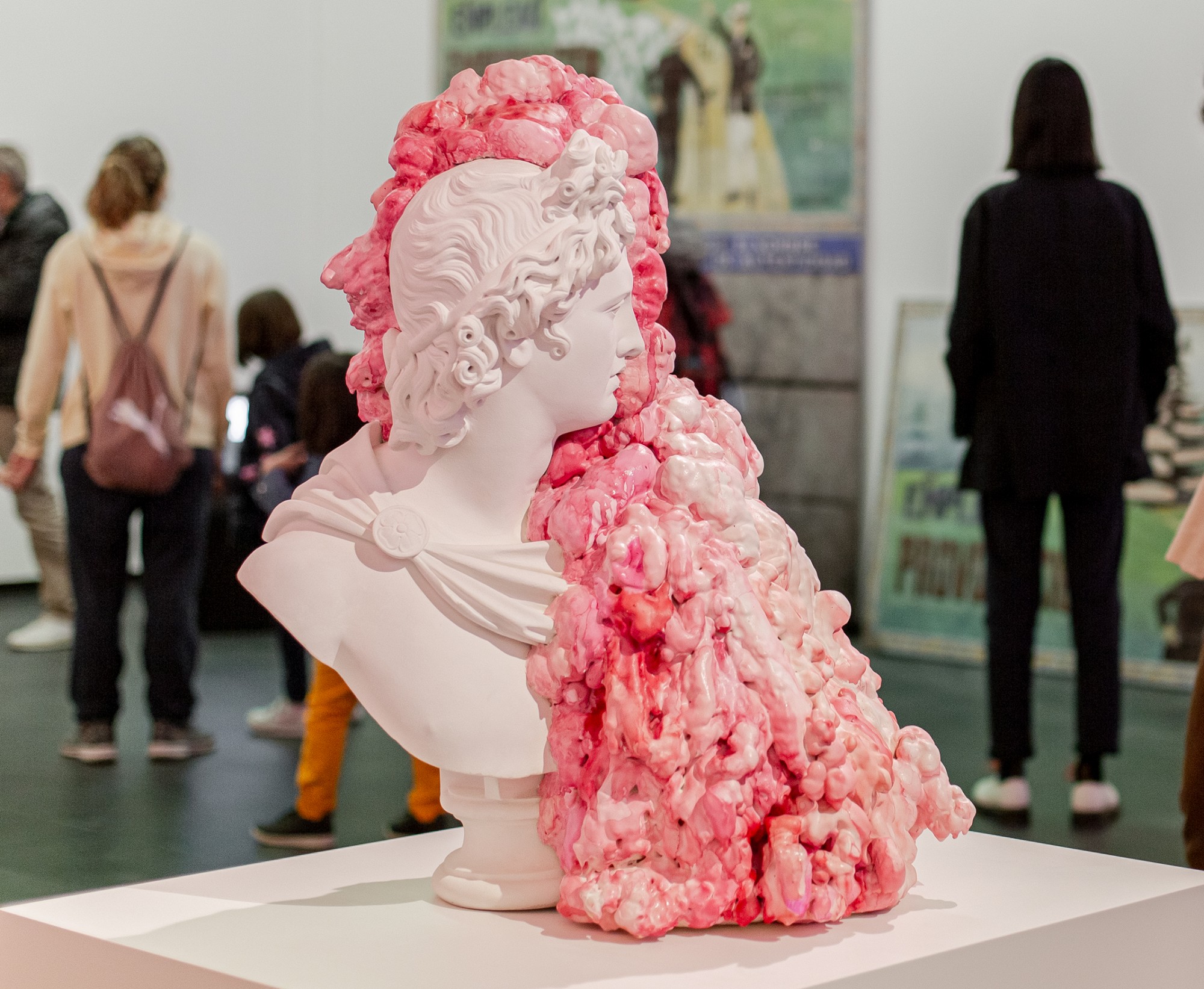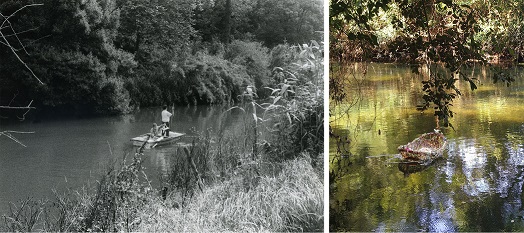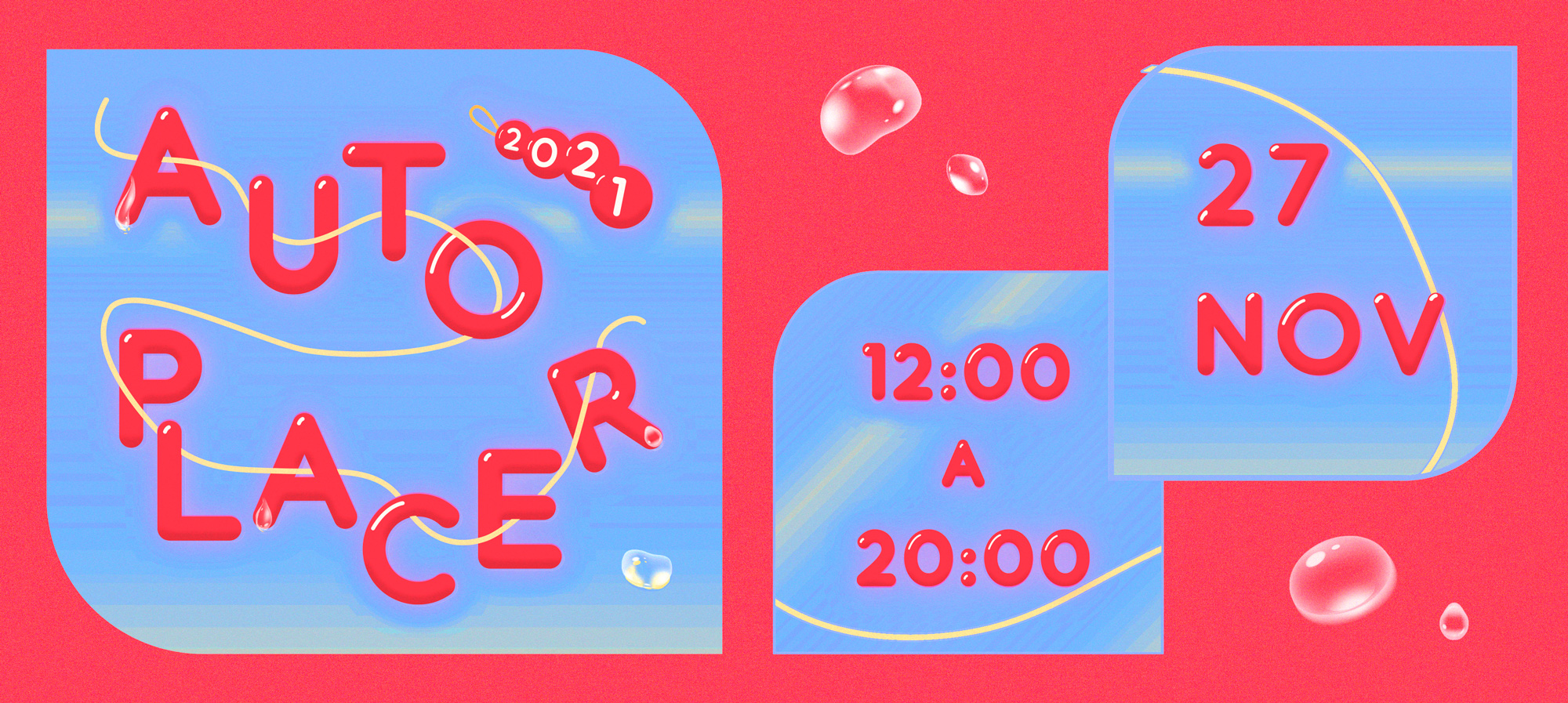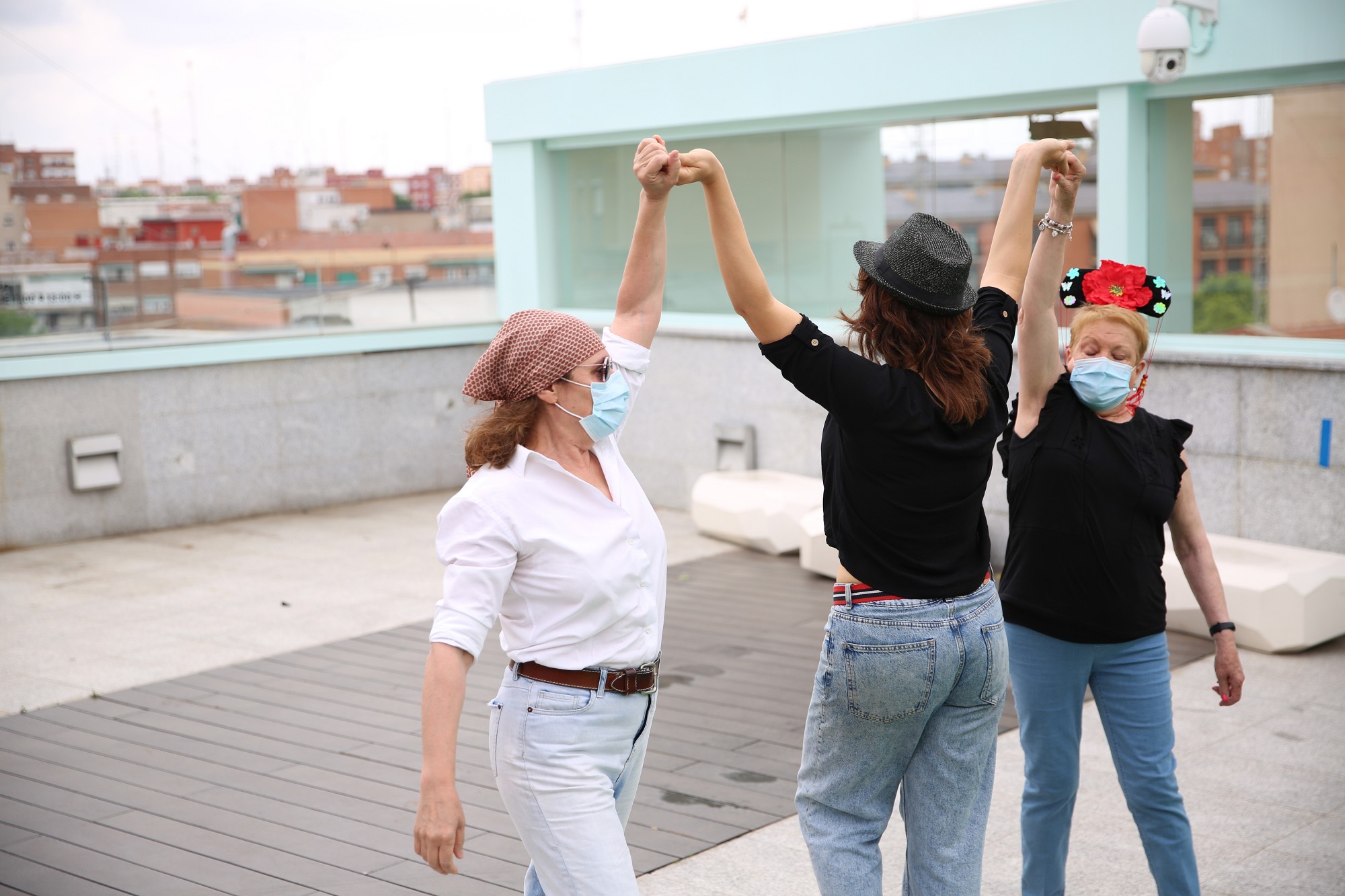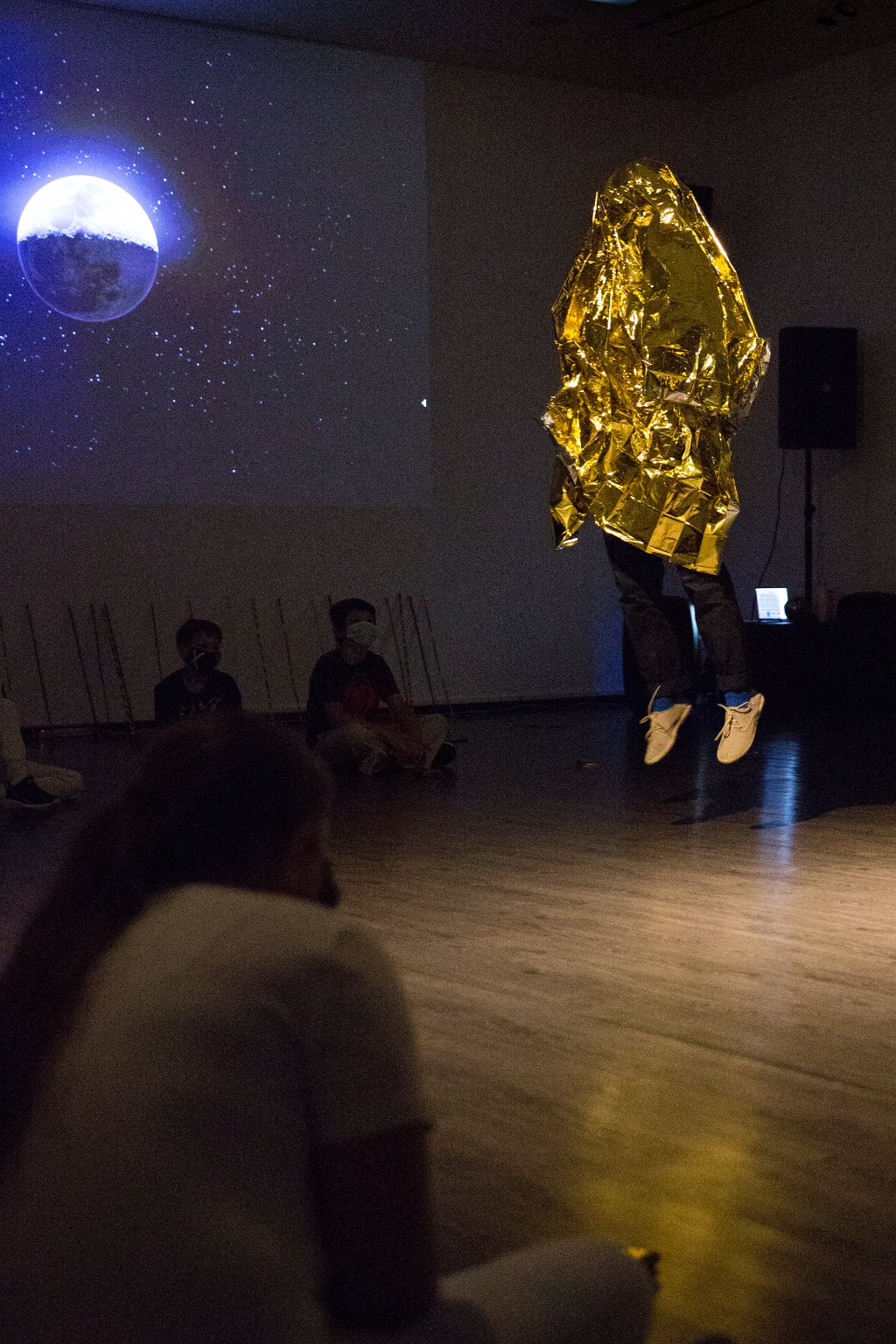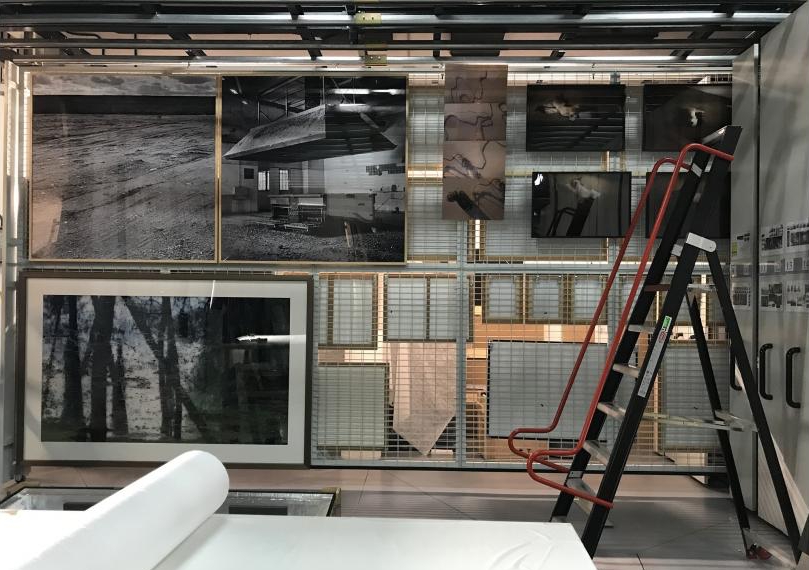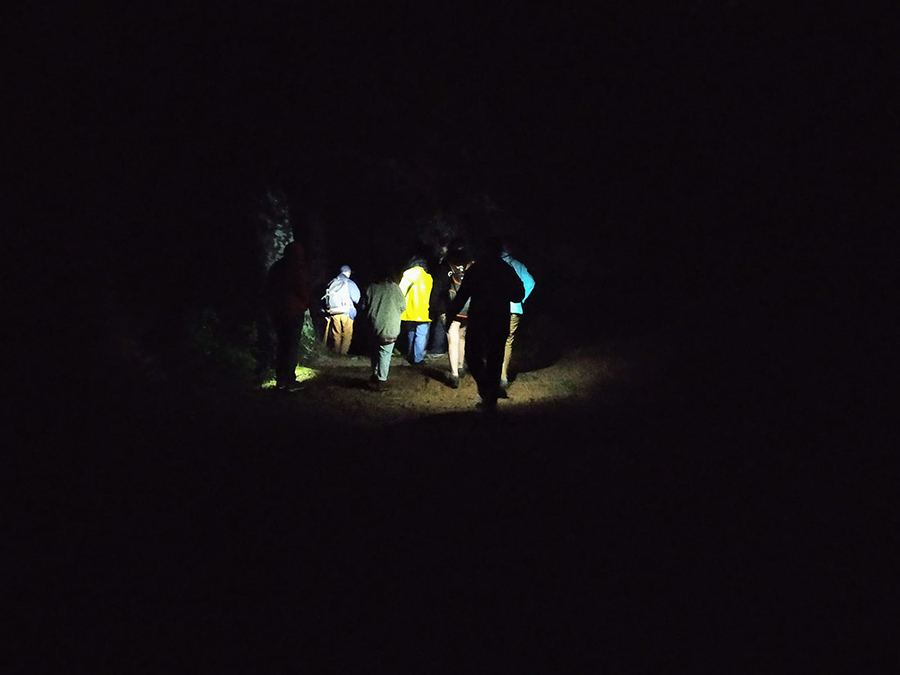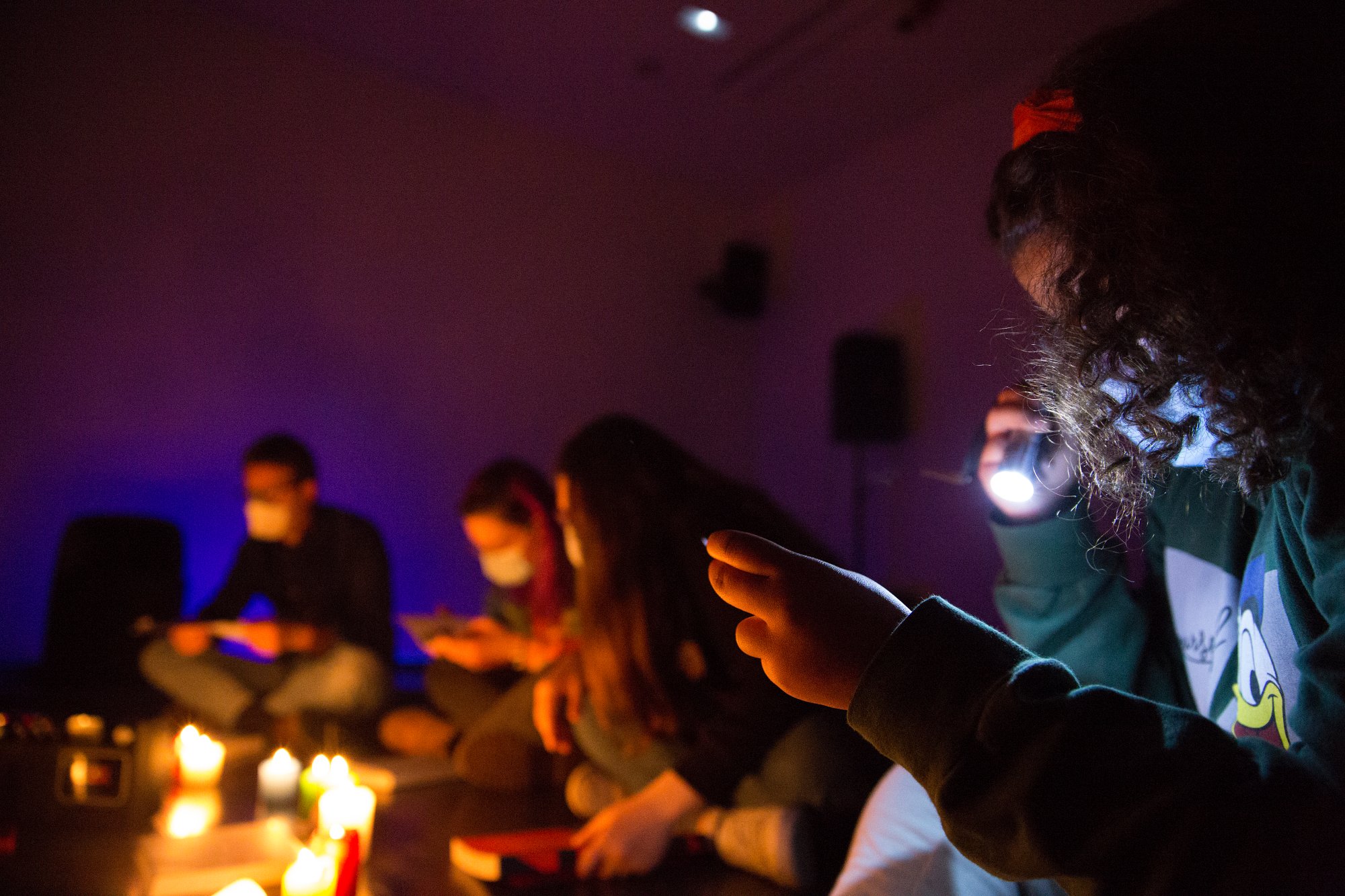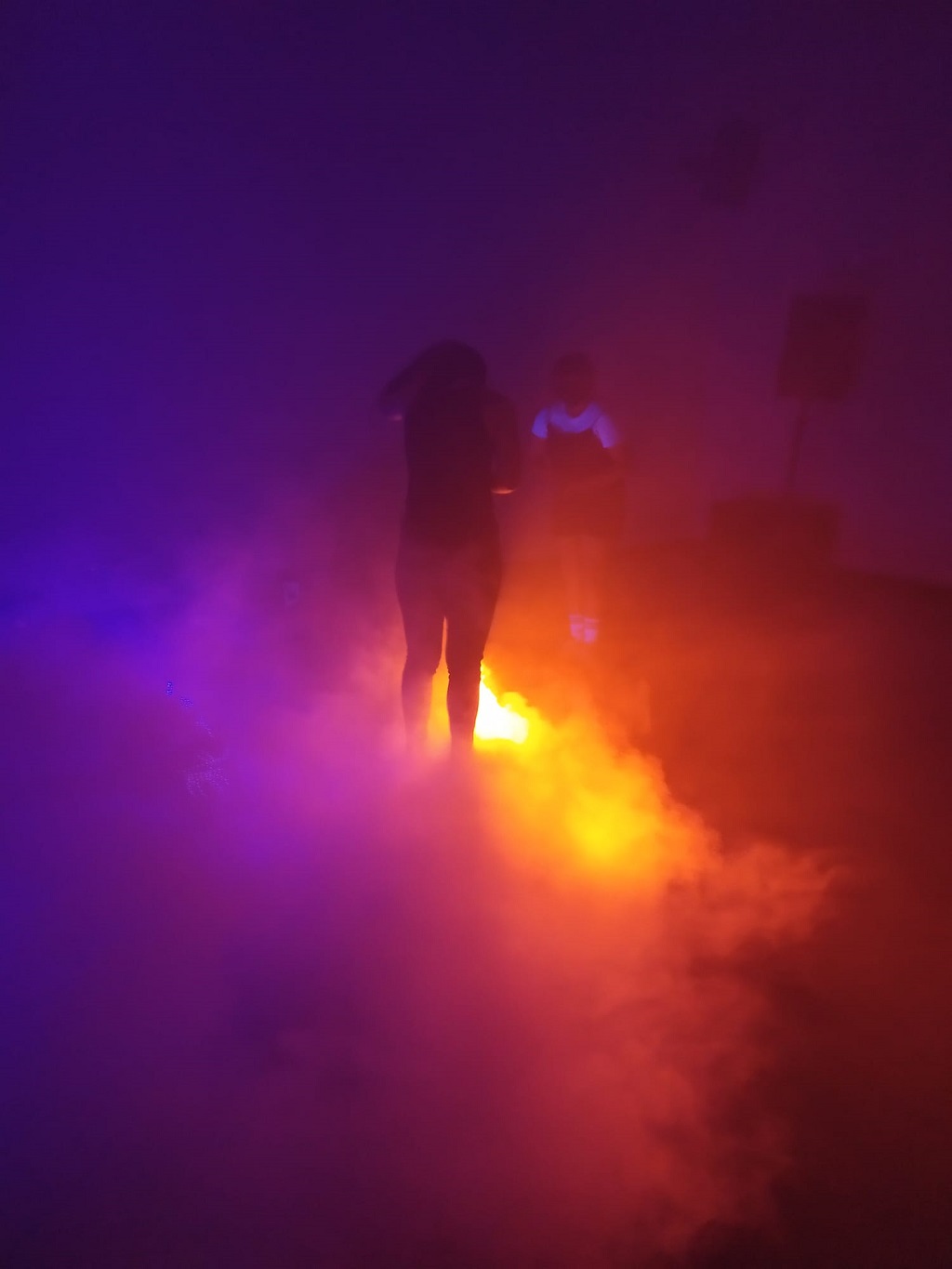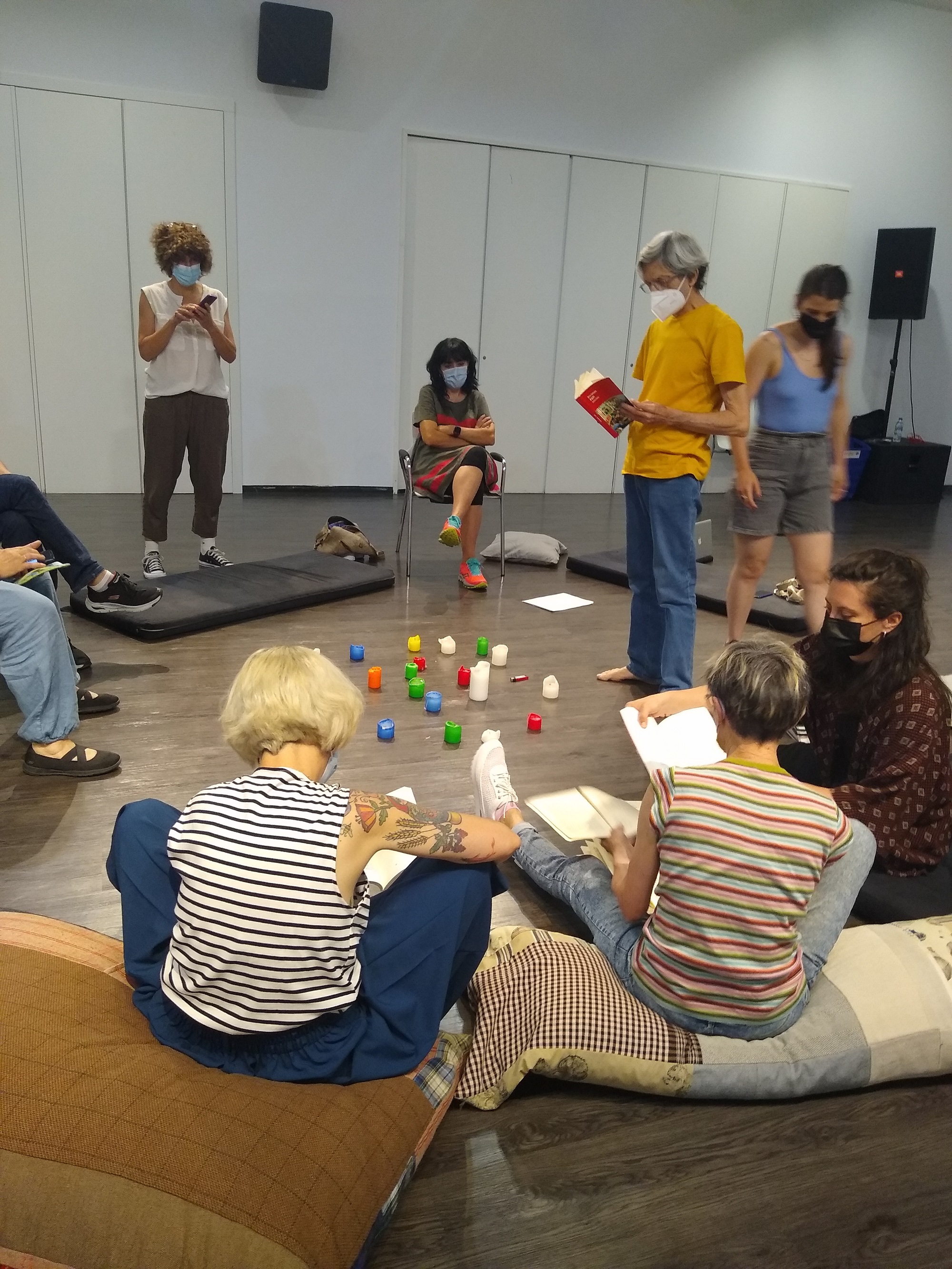REGISTRATIONS SOLD OUT
The Autoplacer festival, the self-publishing music event held every year at CA2M since 2010, is back again this year on Saturday 27 November. This year the festival will focus on defending the creative and relational potential of the underground Spanish scene and its discourses in a series of concerts by independent groups and soloists.
The festival returns again lending support to various guest invited projects that promote concepts of self-publishing, self-distribution and collaborative networks in disciplines like comics, fanzines and illustration, among others.
In addition, Autoplacer and CA2M are once again organizing the Autoplacer Roughcuts competition. Growing in stature with every passing year, it is a platform presenting a major pool of talented young groups starting out on the scene, lending greater visibility to the diversity of music beyond the codes set in place by the industry and formula radio.
In such a fraught moment for live music as the present, projects like Autoplacer, in which institutions and the music scene join forces around concepts such as care, respect and mutual support, provide a big stimulus for contemporary creation. Let’s say it loud and proud: Long live Autoplacer!
Curated by Autoplacer/Sindicalistas
AUTOPLACER 2021 – SATURDAY 27 NOVEMBER 12:30 - 20:00
12:30 – 15:00 NAVXJA, CABIRIA, XENIA
16:30 – 20:00 AMOR BUTANO, OKOMO, VIUDA, LUZ FUTURO
ADMISSION
Due to the characteristics of the venue in which the Autoplacer 2021 festival is being held, admission will be by prior enrolment only.
Enrolment opens on Tuesday 23 November at 12 noon. Forms are available on this webpage.
Enrolment is personal and non-transferable.
You can enrol for the morning and/or afternoon sessions:
Morning: 12:30 - 15:00 with Navxja, Cabiria and Xenia.
Afternoon: 16:30 - 20:00 with Amor Butano, OkOmo, Viuda and Luz Futuro.
Please be punctual.
Doors open between 12:00 and 12:30 for the morning session and between 16:00 and 16:30 for the afternoon session.
Doors close at the beginning of each session.
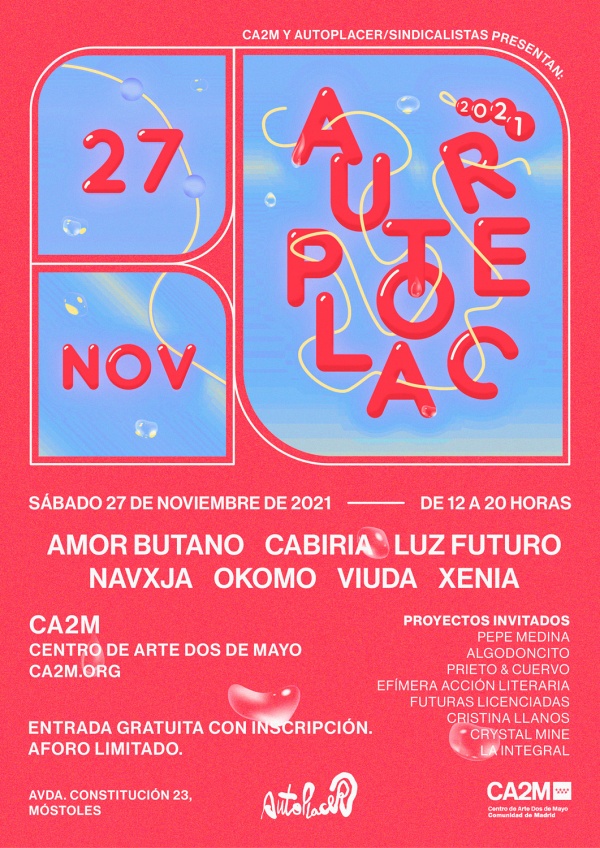
AMOR BUTANO
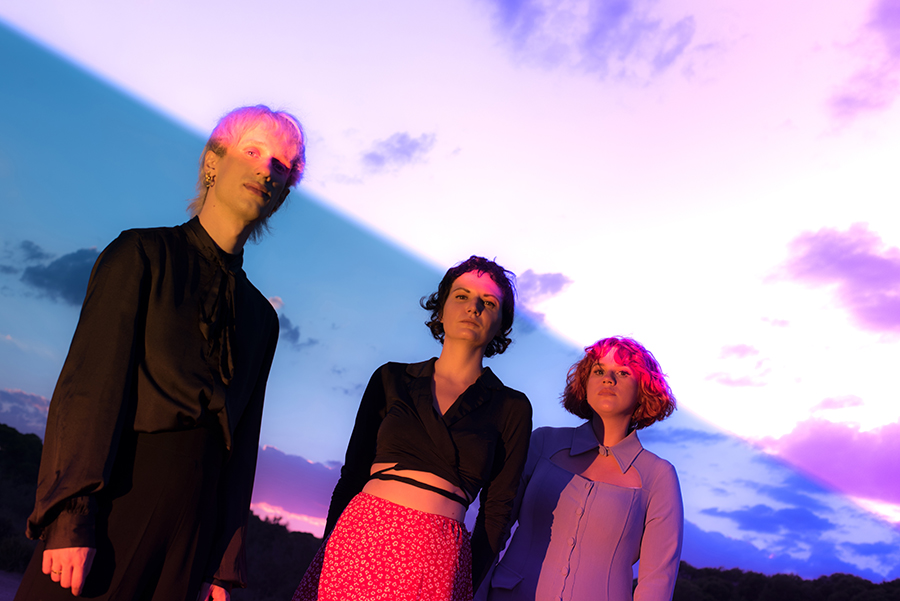
Raquel, Sara y Diego forman Amor Butano en Valencia a finales de 2019, un grupo de pop efervescente con reminiscencias a Mecano o a Vocoder. Conjugando el amor y la física, construyen canciones divertidas con un poso de pesar y nostalgia, un contraste musical que bien podría ser una metáfora de la vida misma.
Vídeo “Entropía”
Disco “Benimaclet” en Bandcamp
CABIRIA

Eva Valero es la mente que se esconde detrás de ese felliniano sobrenombre que es Cabiria y la responsable del disco “Ciudad de las dos lunas”(2021, El Volcán Música) un viaje personal, una toma de conciencia de las capacidades propias y una autoafirmación como artista pop. Donde antes había timidez y socarronería ahora hay canciones redondas y brillantes, donde antes había susurros y ambientes vaporosos ahora hay una voz rotunda que nos guía por un universo pop tan variado en sus referencias como redondo en su factura. Eva ha dejado de ser nuestra Cabiria, un hito underground, para convertirse en una de las grandes artistas de pop electrónico del país, y todo sin perder ni un ápice de su frescura o su personalidad.
Disco “Ciudad de las dos lunas” en Bandcamp
Video “Después de medianoche”
LUZ FUTURO
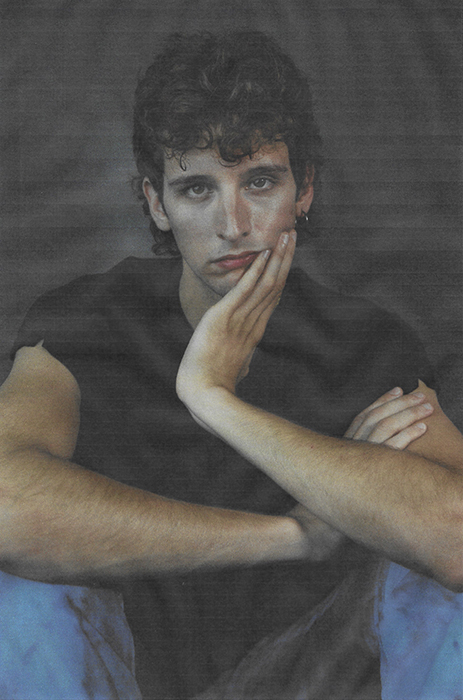
Luz Futuro es el proyecto musical del productor canario Daniel Benavides. Artista etéreo y avant-garde, transmite sensaciones encontradas entre el nuevo romanticismo y la electrónica más experimental. En su estética sonora está presente el post punk andrógino y su música está influenciada por el new wave de los 80's, el ambient y el electro.
Ha publicado este año su primer EP “Falsos Techos” con el joven sello americano Beso de Muerte Records y mítico el sello alemán Young & Cold Records. Haciendo justicia con su sonido atemporal, recorriendo el pop de la nueva ola y el post punk, con letras directas y melodías nostálgicas.
Luz Futuro en Bandcamp
Vídeo “La cura”
NAVXJA
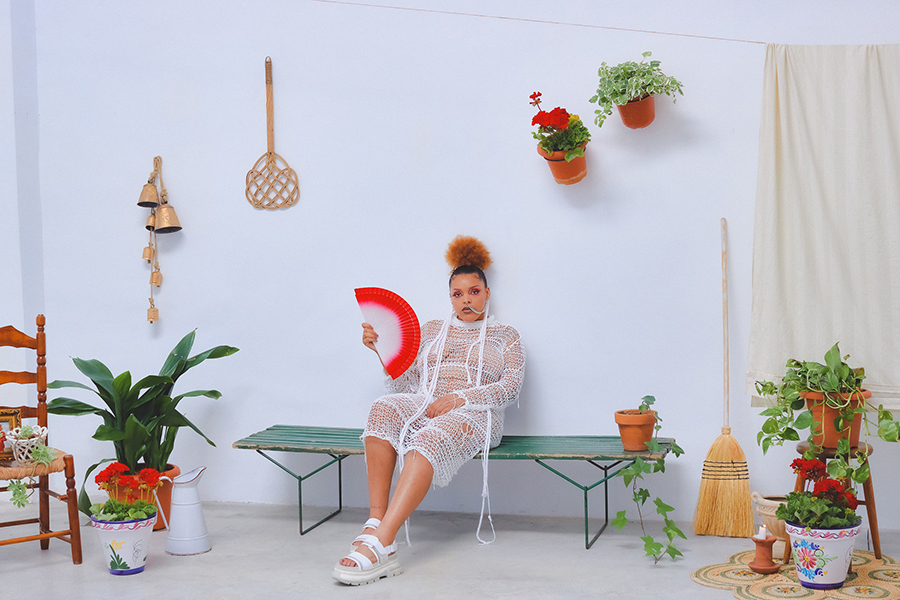
Artista multidisciplinar, documentalista y parte de la nueva escena bedroom desde una visión racializada y disidente. La cantante afrodescendiente Naomy Salge ha sorprendido con su manera personal de acercarse al pop desde todas sus vertientes, pero sobre todo con una sinceridad que duele en el corazón.
Disco “Amor de verano” en Bandcamp
Vídeo “Mi chica”
OKOMO - Ganador Concurso de Maquetas Autoplacer 2020
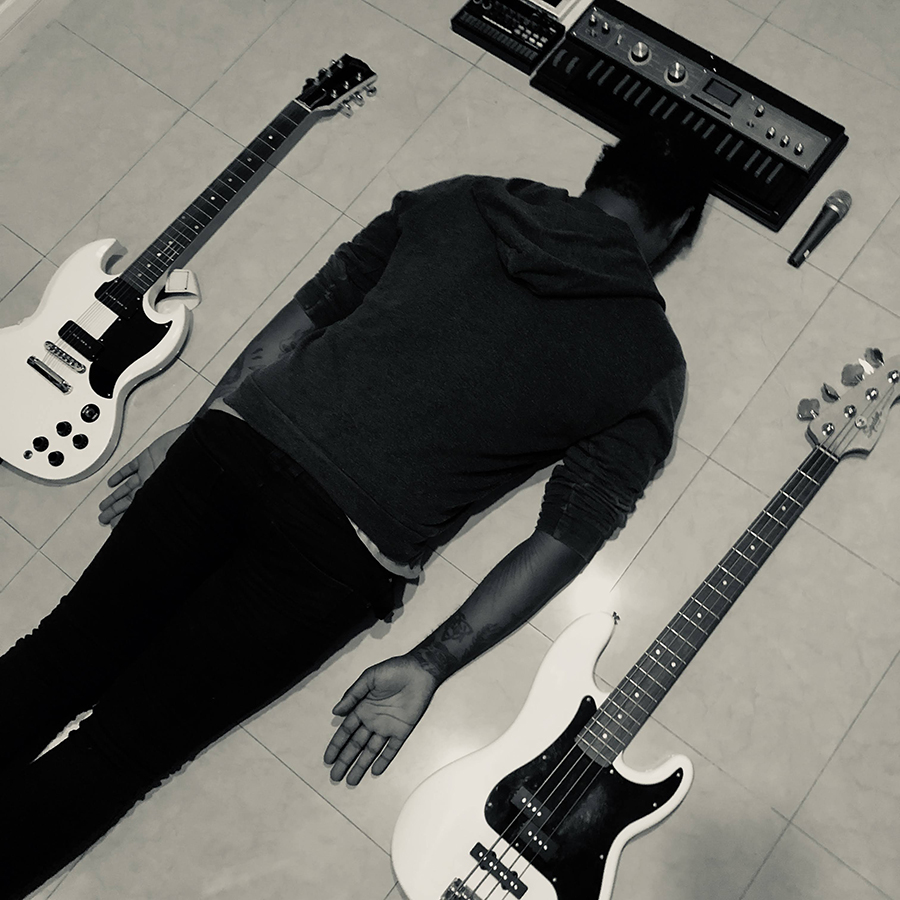
OkOmO es un músico con toda una vida de experiencia en multitud de bandas del underground capitalino, inclinándose por la experimentación sonora extrema y sin complejos en la mayoría de proyectos en los que ha participado. Sin embargo para esta nueva aventura ha dejado atrás todo lo complicado e intrincado de sus etapas anteriores y se ha volcado en un sonido directo, sencillo y melódico con cierta querencia por el lo-fi.
Acaba de grabar su primer álbum, con el que promete sofisticar y refinar los sonidos expuestos en la demo ganadora de la última edición del Concurso de Maquetas Autoplacer.
Canción “Fuera” en Bandcamp
VIUDA
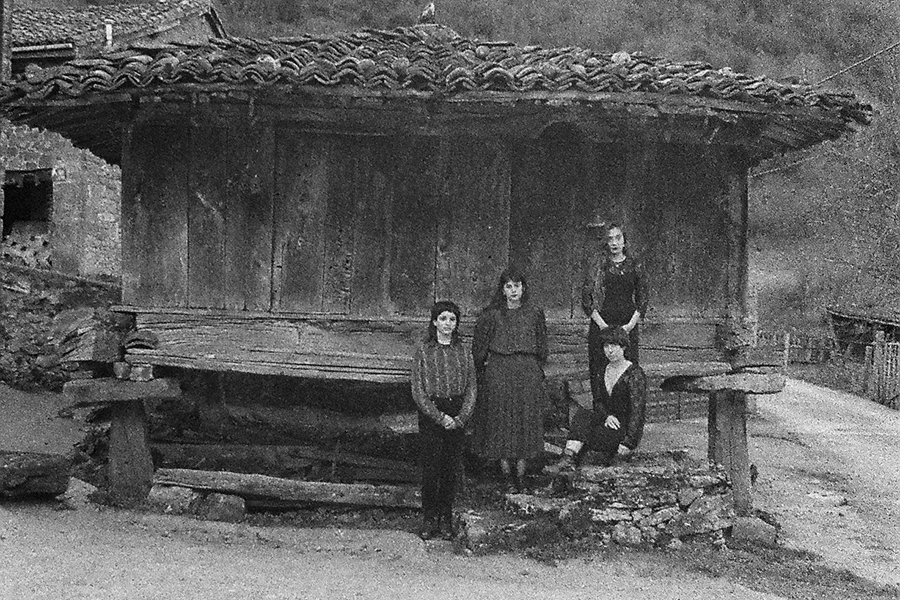
Con una inspiración casi demoníaca, cuatro asturianas han juntado su talento y brujería para dar a conocer Viuda. Decimos talento porque mezclar punk oscuro con copla no es fácil, pero ellas lo hacen como nunca antes se había oído. Puedes comprobarlo escuchando desde ya mismo su primer EP homónimo: cinco canciones de furia y puro veneno, traídas para corromper todas las almas puras que se presten a la ceremonia. Las letras pasarían perfectamente por conjuros y hechizos basados en la rabia y la perversión; sin dejar de lado su música imponente y acelerada, para que la fuerza y la magia de este cuarteto asturiano no pase desapercibida.
EP “Viuda” en Youtube
Viuda en Bandcamp
XENIA
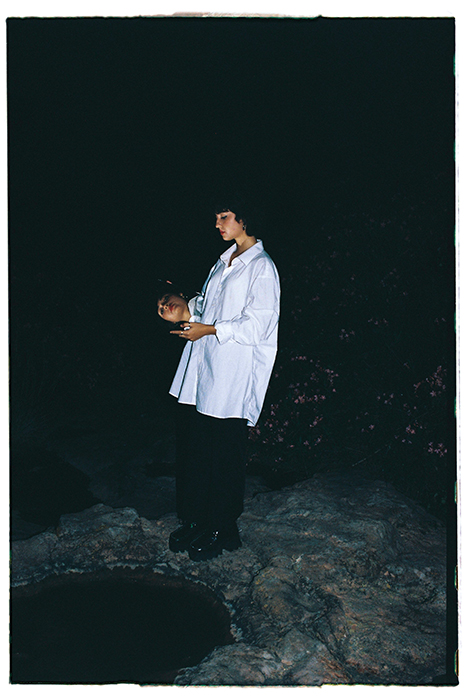
Xenia, una joven de 20 años que ha demostrado adaptarse perfectamente a dicha definición explorando sonidos y letras en su música capaces de crear una atmósfera que mezcla los sonidos que irrumpieron en la década de los 80, así como el synth pop o new wave, con elementos de actualidad.
Vídeo “Desde la Luna”
EP “Esfera” en Bandcamp
